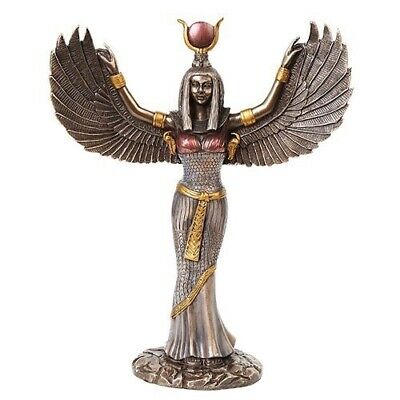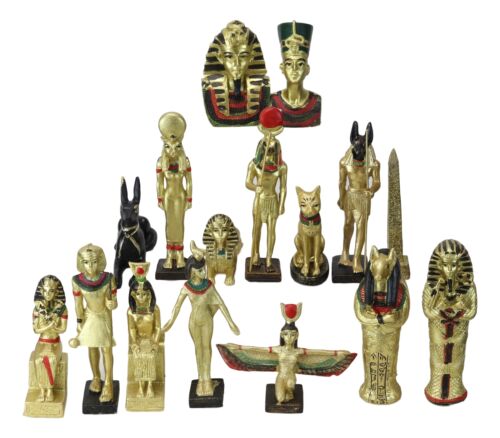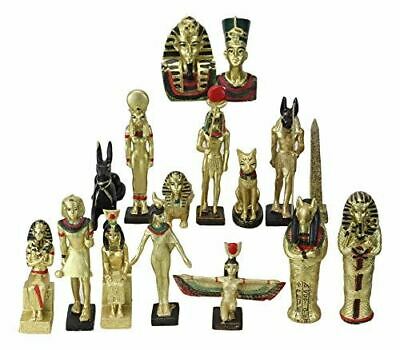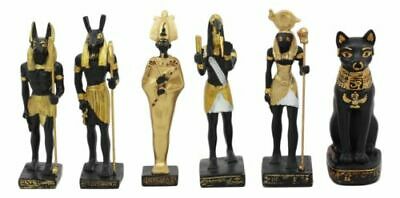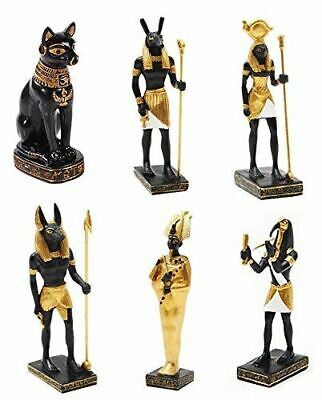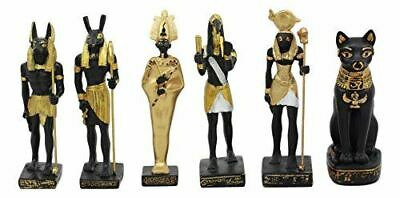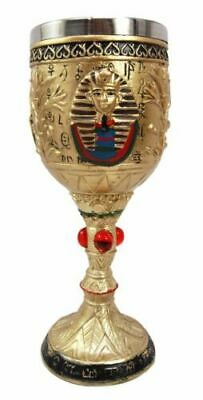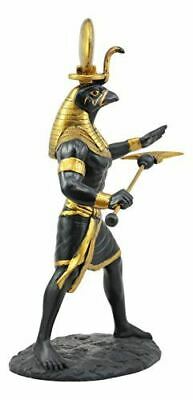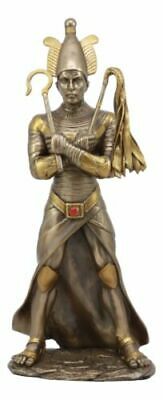-40%
11.88 Inch Egyptian Isis Mythological Bronze Finish Statue Figurine
$ 26.92
- Description
- Size Guide
Description
This standing Goddess Isis With Open Wings statue is made of designer resin and intricately sculpted with attention to detailThis standing Goddess Isis With Open Wings statue is hand painted and finished by our artisans to give it almost real likeness and resemblance
This standing Goddess Isis With Open Wings statue measures 12" tall, 10" wide, and 3.5" deep approximately
This statue depicts Goddess Isis standing elegantly with her wings spread wide open.
Isis (/ˈaɪsɪs/; Ancient Greek: Ἶσις; original Egyptian pronunciation more likely "Aset" or "Iset"[1]) is a goddess from the polytheistic pantheon of Egypt. She was first worshiped in Ancient Egyptian religion, and later her worship spread throughout the Roman empire and the greater Greco-Roman world. Isis is still widely worshiped by many pagans today in diverse religious contexts; including a number of distinct pagan religions, the modern Goddess movement, and interfaith organizations such as the Fellowship of Isis. Isis was worshipped as the ideal mother and wife as well as the patroness of nature and magic. She was the friend of slaves, sinners, artisans and the downtrodden, but she also listened to the prayers of the wealthy, maidens, aristocrats and rulers.[2] Isis is often depicted as the mother of Horus, the falcon-headed deity associated with king and kingship (although in some traditions Horus's mother was Hathor). Isis is also known as protector of the dead and goddess of children. The name Isis means "Throne".[3] Her headdress is a throne. As the personification of the throne, she was an important representation of the pharaoh's power. The pharaoh was depicted as her child, who sat on the throne she provided. Her cult was popular throughout Egypt, but her most important temples were at Behbeit El-Hagar in the Nile delta, and, beginning in the reign with Nectanebo I (380–362 BCE), on the island of Philae in Upper Egypt.
